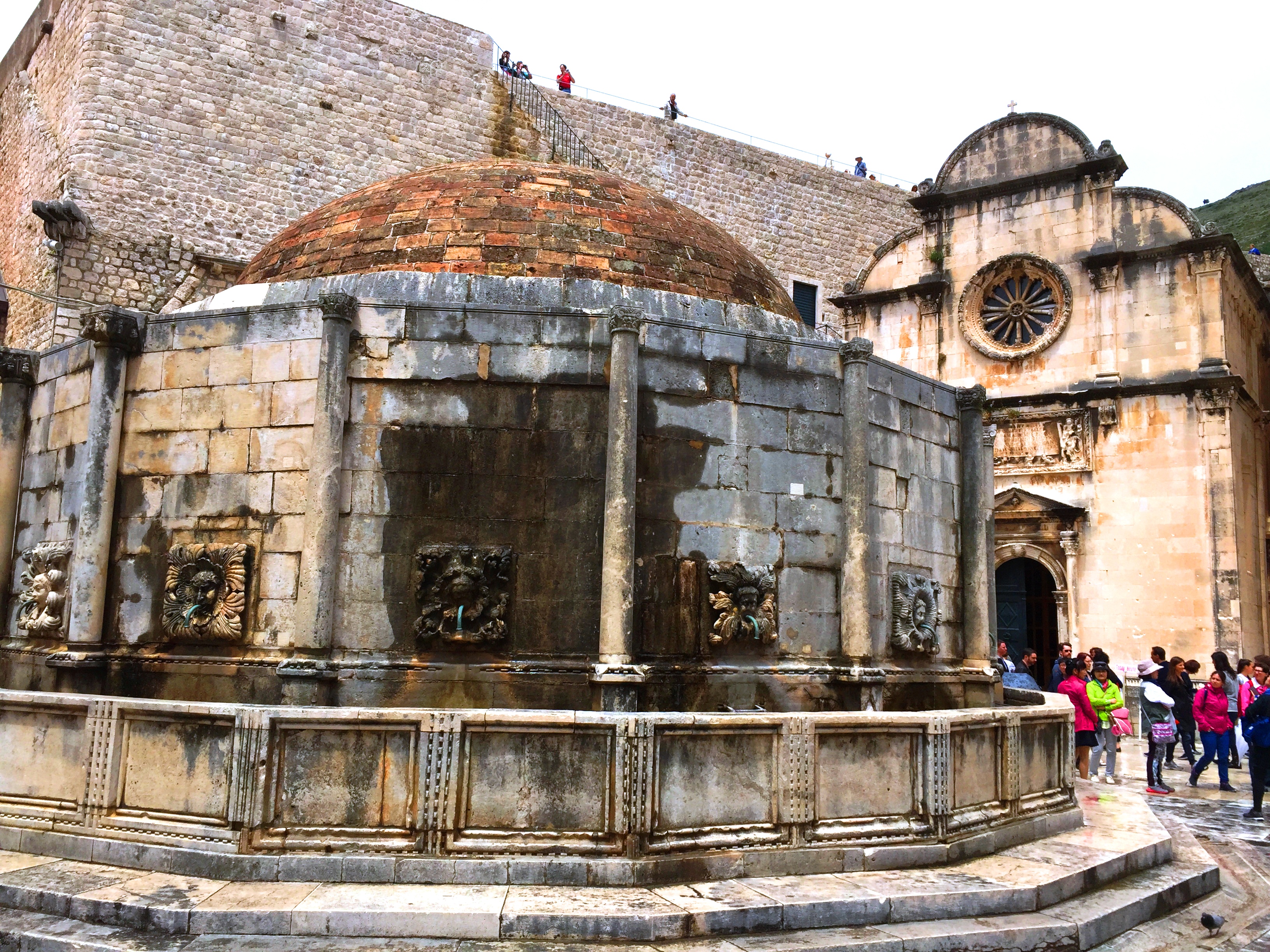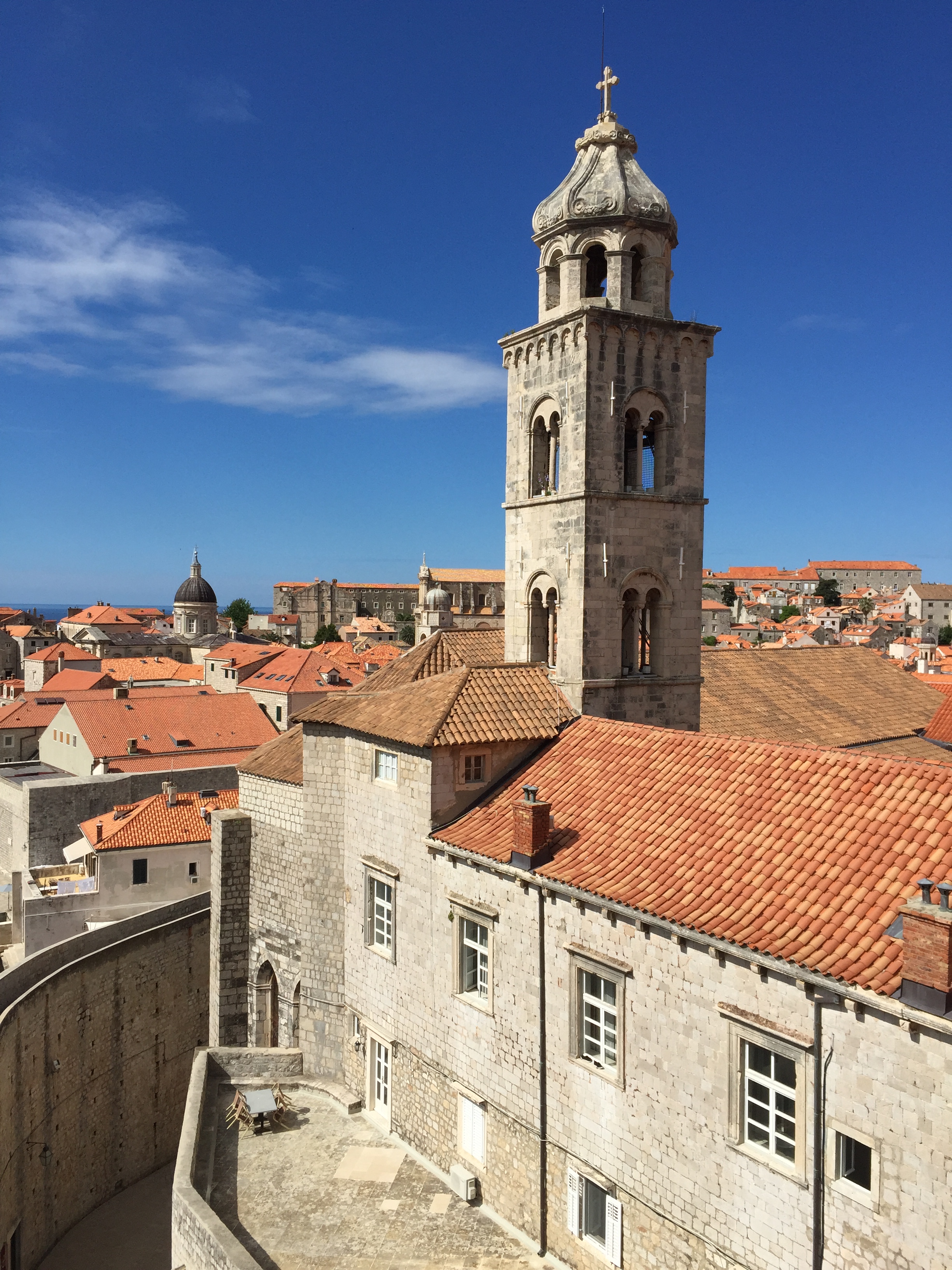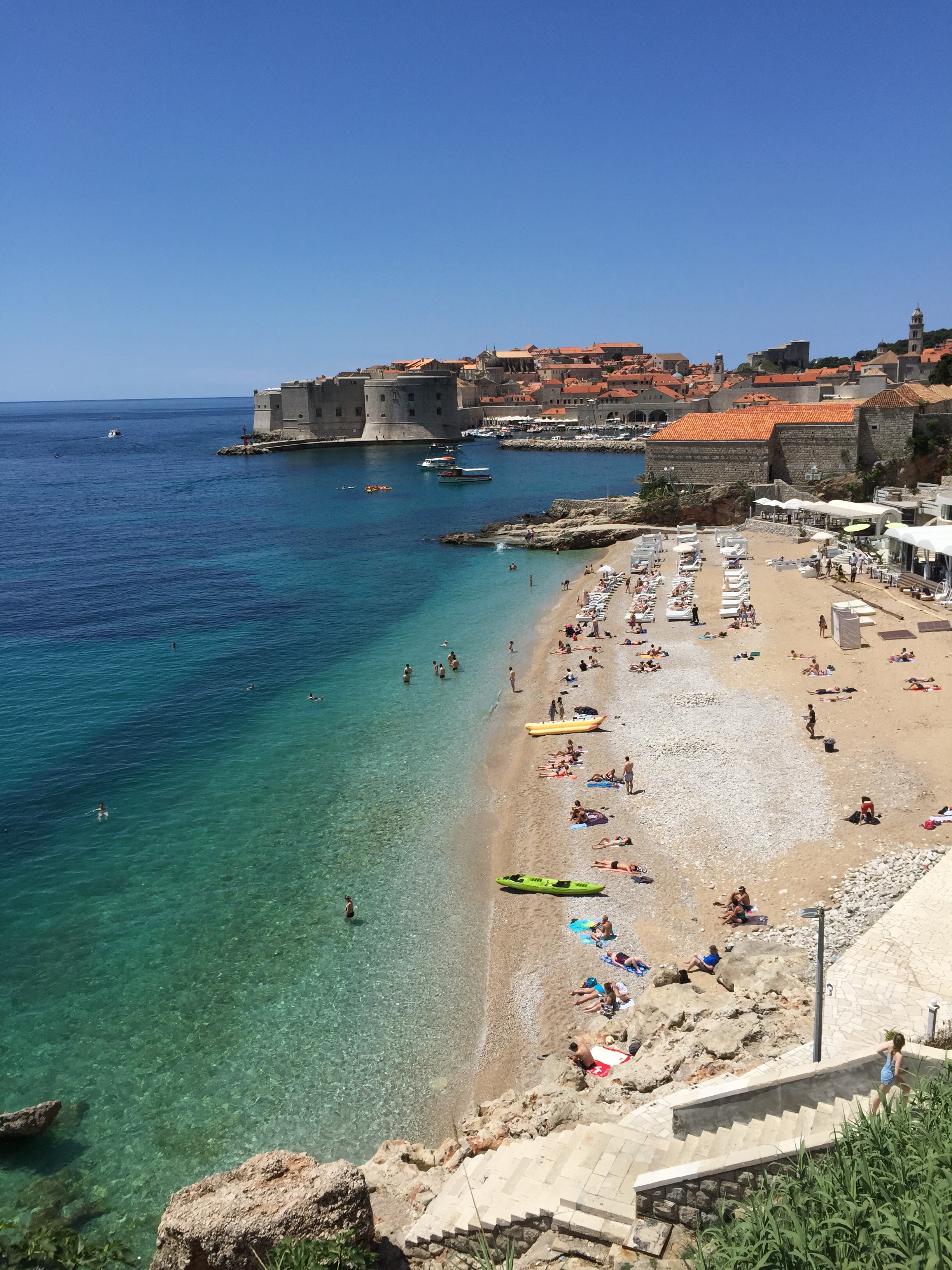By Qiong Wang
Photos: Qiong Wang
 If you are not very familiar with the city of Dubrovnik, Croatia, you must have heard of “Game of Thrones.” Yes, the HBO series was filmed there. Dubrovnik is located on the very southern tip of Croatia by the east coast of the Adriatic Sea. The entire city is built on sea cliffs, encircled by 3-to-5-meters-thick, 25-meters-high and 1950-meters-long brick walls, constructed mostly from the 13th to the 17th centuries. These city walls rise up and down along the cliff rocks, having protected the city for nearly 1000 years from both the sea and the land, are still standing strong and admirable. Five fortresses of different sizes, altitudes and styles are niched in between the walls. The sight of this marvelous city and its geographic setting reminded me immediately of the legendary city of Constantine during the Byzantine Empire, even though I have never been there.
If you are not very familiar with the city of Dubrovnik, Croatia, you must have heard of “Game of Thrones.” Yes, the HBO series was filmed there. Dubrovnik is located on the very southern tip of Croatia by the east coast of the Adriatic Sea. The entire city is built on sea cliffs, encircled by 3-to-5-meters-thick, 25-meters-high and 1950-meters-long brick walls, constructed mostly from the 13th to the 17th centuries. These city walls rise up and down along the cliff rocks, having protected the city for nearly 1000 years from both the sea and the land, are still standing strong and admirable. Five fortresses of different sizes, altitudes and styles are niched in between the walls. The sight of this marvelous city and its geographic setting reminded me immediately of the legendary city of Constantine during the Byzantine Empire, even though I have never been there.
The Nobel Prize winner Ivo Andric said that the city roofs alone could be a subject of an entire study. If you look at any city in the world from the air, Dubrovnik is probably one of the most easily identifiable cities. Climbing onto the top of the city wall, a sea of red slanted tile roofs of various sizes and orientation flashed in front of my eyes, making me fascinated with their texture and structure immediately.  They snuggled so nicely together, without any clay in between it seemed. At some places on the city wall, they are within reach. Under the sun, the roof shadow brought out great contrast for different shades of red, crimson, and maple, random yet harmonious. The 50-shades-of-red on the roof tiles are vibrant but not flirty, because their high spirits are brought securely to the ground by the unanimously clay-colored solid stone houses, a great background color to address the roof tiles.
They snuggled so nicely together, without any clay in between it seemed. At some places on the city wall, they are within reach. Under the sun, the roof shadow brought out great contrast for different shades of red, crimson, and maple, random yet harmonious. The 50-shades-of-red on the roof tiles are vibrant but not flirty, because their high spirits are brought securely to the ground by the unanimously clay-colored solid stone houses, a great background color to address the roof tiles.
As a beautiful medieval city on the east coast of the Adriatic Sea, Dubrovnik went through great prosperity during the golden era of Mediterranean trading, and became the business and trading center of the south Dalmatian region, rivaling against Venice at the time.  Because of its geographic and business significance, Dubrovnik had always been under the protection of different cross-continental empire powers. Dubrovnik was pretty lucky in this way. Its geographic location is a gift from god, making it far from the most turbulent regions. However in 1667, on a morning just before Easter, a major earthquake hit Dubrovnik, killing about half the inhabitants. Many buildings were damaged, including my favorite construction in the city, the Onofrio’s Fountain. This 15th century rotunda-shaped monstrous structure was used to supply water to the city habitants in the past via 16 masked animal faces, when drinking water was scarce. This fountain is like no other fountain I have ever seen, cute, over-sized and down-to-earth, just like the Baymax of Dubrovnik.
Because of its geographic and business significance, Dubrovnik had always been under the protection of different cross-continental empire powers. Dubrovnik was pretty lucky in this way. Its geographic location is a gift from god, making it far from the most turbulent regions. However in 1667, on a morning just before Easter, a major earthquake hit Dubrovnik, killing about half the inhabitants. Many buildings were damaged, including my favorite construction in the city, the Onofrio’s Fountain. This 15th century rotunda-shaped monstrous structure was used to supply water to the city habitants in the past via 16 masked animal faces, when drinking water was scarce. This fountain is like no other fountain I have ever seen, cute, over-sized and down-to-earth, just like the Baymax of Dubrovnik.
Dubrovnik has struggled to not show any signs of wear and tear for over 1500 years. However, today’s Dubrovnik is one of the” youngest” cities I have been to. Walking through the streets of Dubrovnik, you can see people enjoying their lives in every open bar and plaza. Soon after sunset, street lights, city wall lights, restaurants and bars light up the entire city inside and out. Streets are flooded with tables, chairs, and different shapes of awnings. You can hear people chatting, laughing, eating and playing music from a distance. I don’t know how late this boisterous scene dies down, but it sure reminded me of New York City.
It is hard not to be enchanted by Dubrovnik when it has a great combination of a naturally beautiful Adriatic beach and the historical depth of a well-preserved UNESCO world heritage medieval city wall.  During my last moments in Dubrovnik, I went to the Banje beach to pay the city one more glance from a distance. The beach is located on the east side of Dubrovnik. It was not the smoothest, nor the biggest beach I have set my foot on. As a matter of fact, I could hardly walk on it because of the pain felt from my bare feet. It took me a while to get adjusted without screaming too much. However, I was swept away by the scene the moment I set my eyes on the beach, the water, the blue sky, and the castle in distance. The water by the beach is so clear with zero contamination that you can see the shadows of kayaks on the seafloor. The water color changes gradually from transparent, to a clear blue-green, and to navy blue, as you look further into the sea. It is like a precious gem. Where the sea ends is not just vast blue sky. Scrubs of green islands are also in sight, very decorative. What distinguishes Dubrovnik Banje beach from many other beautiful Caribbean beaches is the view of the east facade of the entire historical city wall and fortresses, which, if you didn’t know, is the signature view of Dubrovnik, and is the site to see Dubrovnik’s sunset.
During my last moments in Dubrovnik, I went to the Banje beach to pay the city one more glance from a distance. The beach is located on the east side of Dubrovnik. It was not the smoothest, nor the biggest beach I have set my foot on. As a matter of fact, I could hardly walk on it because of the pain felt from my bare feet. It took me a while to get adjusted without screaming too much. However, I was swept away by the scene the moment I set my eyes on the beach, the water, the blue sky, and the castle in distance. The water by the beach is so clear with zero contamination that you can see the shadows of kayaks on the seafloor. The water color changes gradually from transparent, to a clear blue-green, and to navy blue, as you look further into the sea. It is like a precious gem. Where the sea ends is not just vast blue sky. Scrubs of green islands are also in sight, very decorative. What distinguishes Dubrovnik Banje beach from many other beautiful Caribbean beaches is the view of the east facade of the entire historical city wall and fortresses, which, if you didn’t know, is the signature view of Dubrovnik, and is the site to see Dubrovnik’s sunset.
